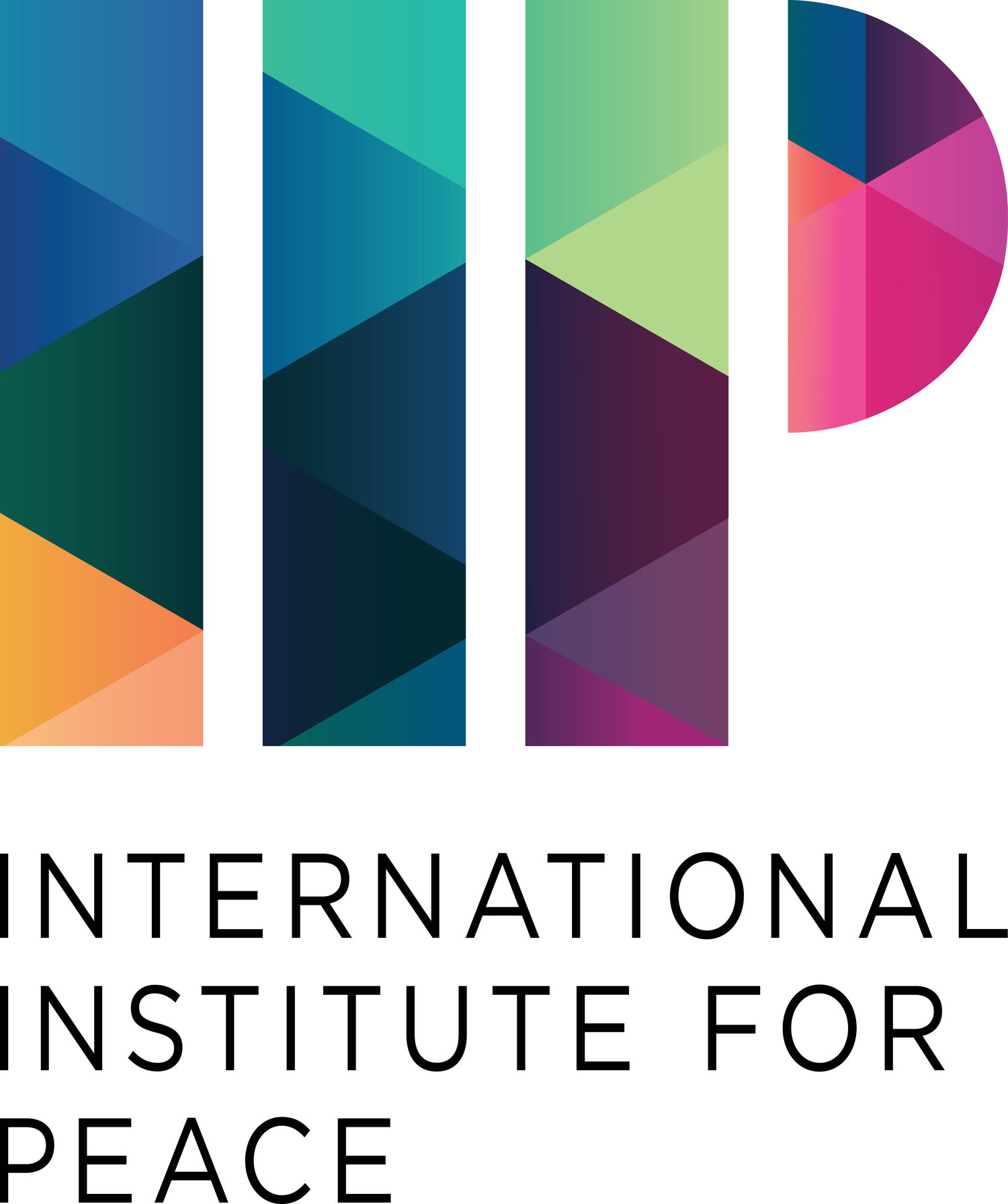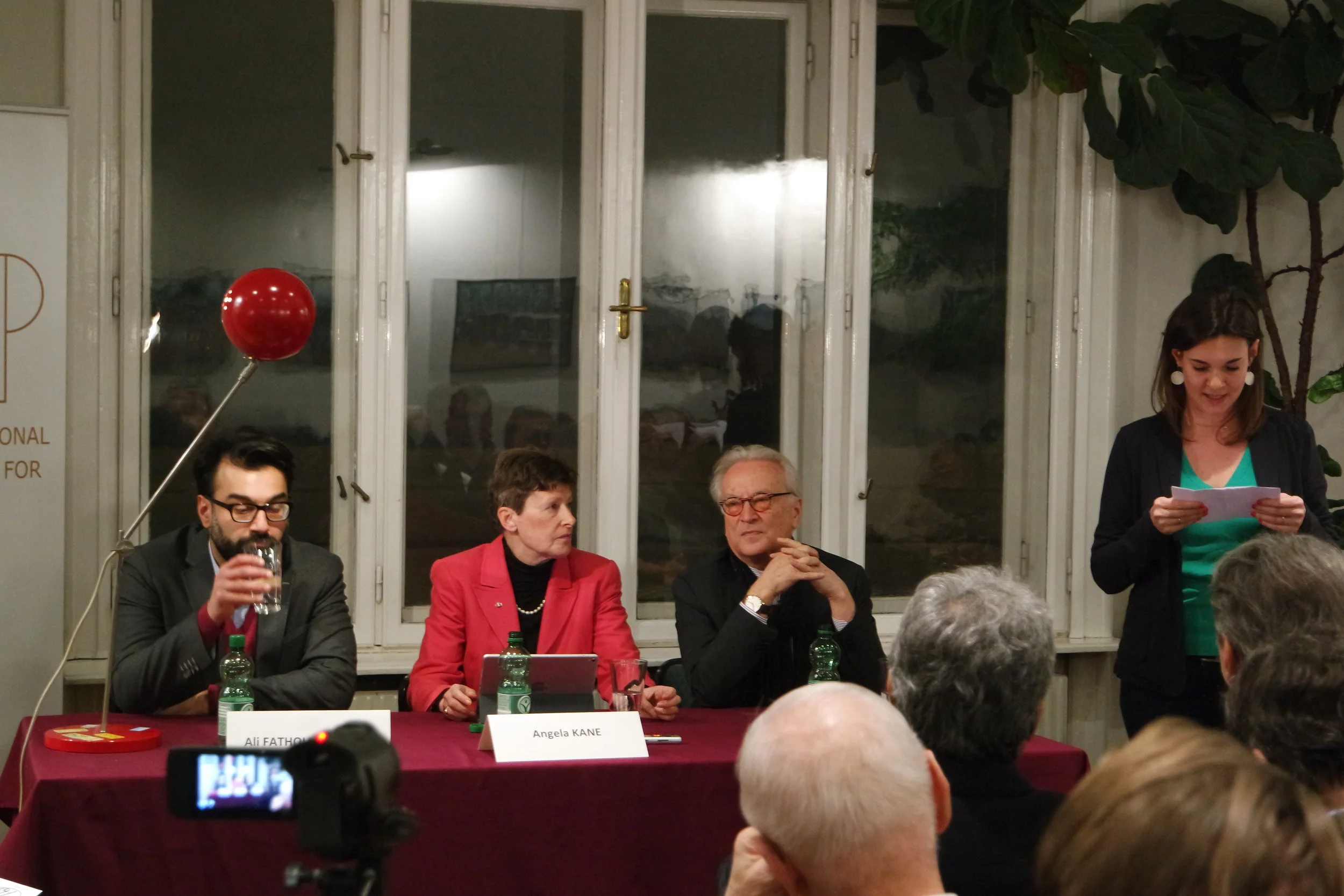by Marlene Prinz
As Iran had to face several new protests in December 2017 the International Institute for Peace organized in cooperation with the Renner Institute a public panel discussion 22nd February to debate about the future situation of Iran, its following internal and foreign policies and opportunities for a solution of the current conflict.
Ali Fathollah-Nejad is Iran expert, visiting scientist at the Brookings Doha Center in Katar and the Belfer Center of the Harvard Kennedy School. Further he works as employee at the Centre of International Cooperation and Development Research of the Université libre de Bruxelles. He mentions how bad the current situation in Iran is, especially on a socio-economic level in terms of youth unemployment and people living below the poverty line. It is very important that the socio-economic level and the political stability can’t be separated. In Iran the authoritarian stability is very problematic as it is not very sustainable. This combination of authoritarian government and socio-economic crisis is leading the country further away of becoming a political stable state. Very precarious is the division of Iran’s population into opponents of the Iranian regime and the leading Iranian elite, but also the not existent inclusion of Iran’s population in terms of political participation.
The protests in Iran lasted 10-14 days and had a wide geographical range but got extenuated by many arrests and by repressive actions of the government. This shows how deep Iran is finding itself in a crisis of its state. The demands of the protesters are clear: social justice and to make up leeway of internal political defaults. The basis of the current protests are formed by the Iranian youth as well as the people who are counting themselves to the “working class poor” without any upward mobility.
What is also seen by Ali Fathollah-Nejad is a tendency of glorification of Iran after a period of demonization – which both prevent a sober and critical look on the current situation.
Hannes Swoboda, former member of the European Parliament, as well as President of the IIP mentions that one of the lesson learned by the Arabic spring is, that the revolutions didn’t contributed to a improvement on the democratic relations in the region – except for Tunisia. The problem was that the regime didn’t have the capacity for the demanded changes. Iran is still suffering from monetary restrictions. For example absent investors, the U.S. American policy that prevents Iran getting dividends out of the nuclear deal from 2015, which all go along with economic difficulties and absent but very much needed money. All this elements don’t allow Iran the kind of room of manoeuvre that it needs.
Also to acknowledge is that Iran has two very separated “worlds” within its state. On one hand there is the very religious side, on the other hand there is the revolutionary youth that can get its necessities by stitching. Swoboda means that this is in a way problematic, because due to this kind of behaviour people can satisfy their needs in an illegal way - but still - and so a real protest doesn’t evolve. Because of the opportunity to stitch, people put up with a situation that is filled by injustice.
Trump supports the Iranian regime in favour of preventing big changes in the Middle East. Referring to the comment on present glorification of Iran, Hannes Swoboda is not seeing this kind of development. In his eyes it is more like moving away from the former demonization. He believes that the key to the solution is neither in glorifying nor in demonizing but in following a policy defined by a pragmatic point of view.
As in Iranian women always had a leading role in resistance movements, Iran should commit itself more on the expansion of women’s rights.
Social justice, democratic structures and the question of regional politics are essential elements in the Iran conflict. These are fundamental aspects to indicate change.
In terms of the future perspective it is important to recognize why the Arabic revolution has failed. It is wrong to say that revolutionary striving for a better system is only leading to chaos and regression. As the revolution was followed by a contra revolution supported by local, regional and international stakeholders the conflict is far more complex. To hold on the paradigm of authoritarian stability is the real issue. The current paradigm from the perspective of Europe is that a policy of change can only be achieved through trade and rapprochement. But as we can sense in reality it’s more a holding onto stability through authoritarian leadership.
It would be more intelligent to pursue a policy of a critical equidistance. Furthermore Europe is also able to hold some bargaining chip against Iran, as it is economically dependent on several European states. With this kind of power Europe faces also big responsibility, since European human rights and democracy standards seem exemplary. The key to a solution lies in a combination of foreign and security policy and development policy. Europe should tackle the situation with more confidence, as its influence is bigger than assumed.
In addition Europe has to commit itself to the nuclear deal, but also has to bed it into a bigger Iran policy with a transatlantic nature.
The role of Israel is also important to keep in mind, since in autumn last year Iran made some territorial victories close to the Israeli border. As a consequence of this Iran has to deal with hostility on the Israeli side although there haven’t been any military confrontations yet. The position of Europe according to Israel plus the demonization of several players in the region hinders communication and rapprochement and makes a policy of equidistance for Europe very difficult.






